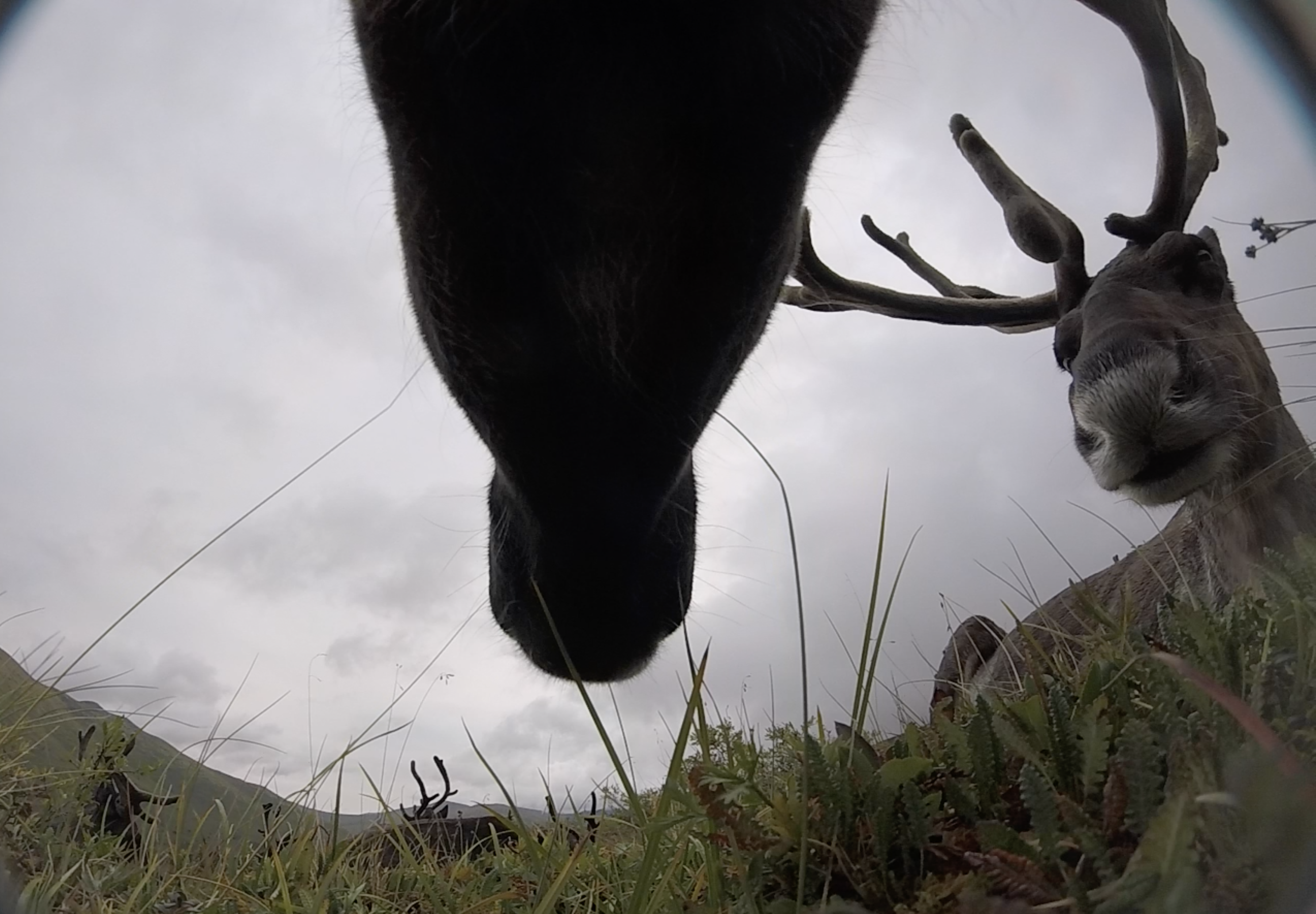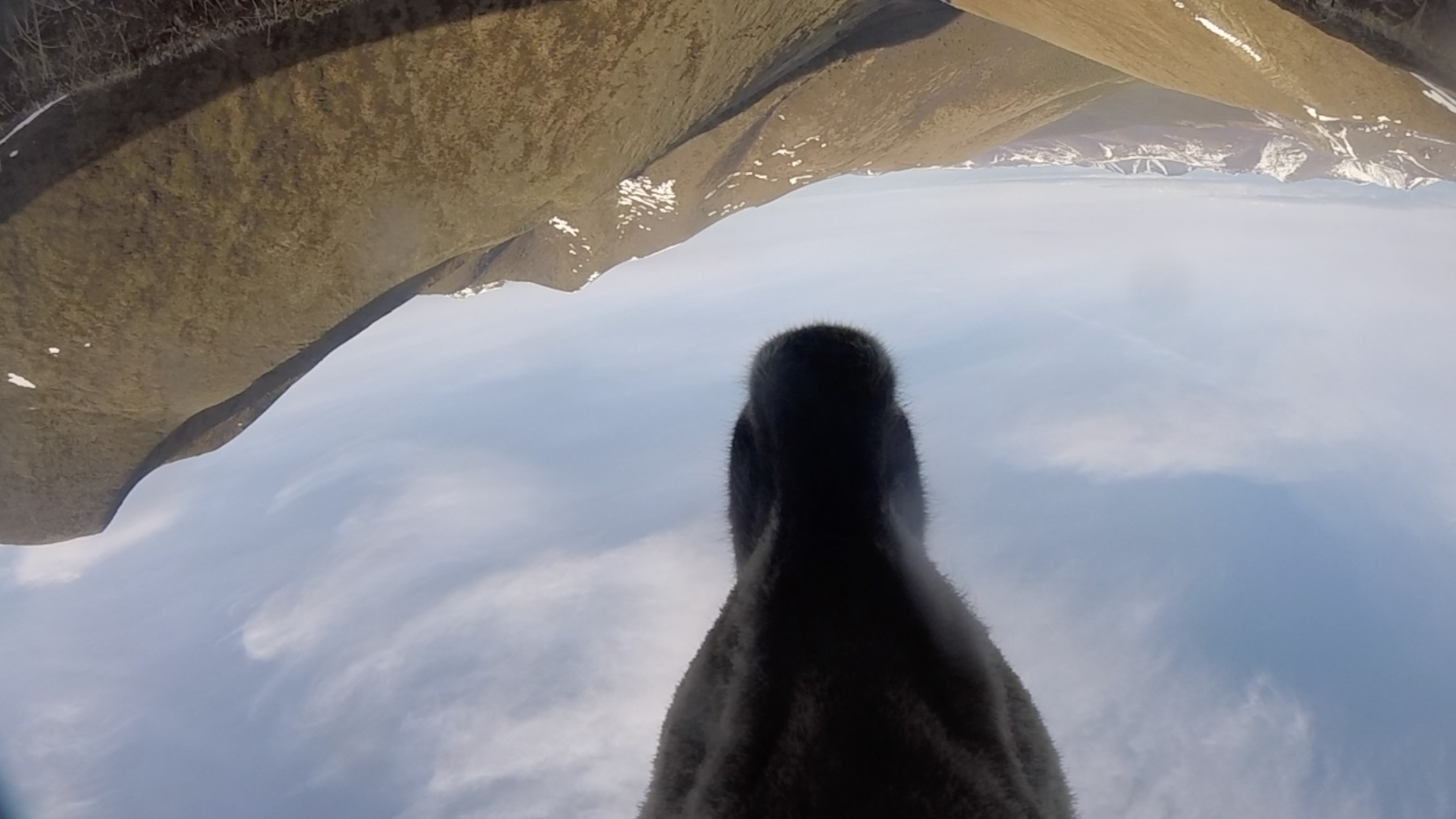I Dreamt I Was My Ancestor
Context: Public art installation over 2 days in March 2024 for the yearly event, "Illumibrate" at JUMP Boise, a nonprofit organization whose mission states: "We are committed to creating a welcoming, fun, out of the box, educational environment that engages communities and opens one's mind to new possibilities and experiences, encouraging individuals and organizations to JUMP to a new level." It is estimated that 1,000+ visitors will engage with the exhibits over the course of the two day event.
The prompt: The theme of this year's Illumibrate is "Dreams" and I am taking that prompt in the direction of creating a dreamlike space where the images are entirely Caribou-derived.In the work, I explore the surreal perspective produced by Caribou wearing video collars.
The work: I will be re-editing some videos shared with me by Dr. Libby Ehlers and the Univesity of Montana. Dr. Ehlers and colleagues have been studying Caribou behavior using video-collars worn by members of the Fortymile herd. Of the almost 19,000 videos taken by the cameras, I was allowed to choose from some of the highlights. I am drawn to these videos because they pull the viewer close to the chest of the Caribou, allowing us an eye-view that is so deeply intimate. By centering the perspective of the Caribou, these videos provide both scientific and relational data. A fabric form that can be passed slowly around by viewers will feature projections of these videos of the herd’s movements through places that are deeply wild. It is with reverence, respect, and awe that I gratfully work with this footage, and cherish the opportunity to bring it to a wider audience.
Collaboration: All video is the work of Dr. Libby Ehlers from the University of Montana and her team, including scientists from the Alaska Department of Fish and Game, Bureau of Land Management, and the Yukon Department of Environment, which studies the Fortymile Caribou herd's foraging behavior using video collars. The Fortymile is one of Alaska’s 31 herds of caribou living from the Canada border west to Adak Island. I am extremely grateful to Dr. Ehlers and her team for allowing me access to the incredible footage. I am also deeply humbled and grateful for the Caribou themselves, for their lives, and their culture, and all that they do within the ecosystems where they live.
Please see the paper written by Dr. Ehlers and team, available free online here: https://onlinelibrary.wiley.com/doi/full/10.1002/ece3.8349
All collaborators on the paper are listed here: Ehlers, L., Coulombe, G., Herriges, J., Bentzen, T., Suitor, M., Joly, K., & Hebblewhite, M. (2021). Critical summer foraging tradeoffs in a subarctic ungulate. Ecology and evolution, 11(24), 17835-17872.
Dr. Ehlers was kind enough to share not only access to this footage, but also to share these thoughts on interdisciplinary collaboration:
“Sharing stories through diverse artistic mediums connects people to a region of the world that few experience and needs more attention in the face of a changing climate and human development. Teal's visionary talents and family history brought together traditional knowledge and Western science in a very exciting and impactful way. I was thrilled to collaborate as Teal embarked on this creative journey to share a unique opportunity where we as researchers, were fortunate to understand caribou behavior from a new perspective - the caribou itself. We need more storytellers and creative artists, like Teal, to elevate and connect us to nature in different ways. Working across disciplines and interests ensures non-human life, like caribou and the systems they depend on, are conserved to ensure they can persist and flourish for another 10,000 years.”
A link to a presentation on this project, given at JUMP on February 21, 2024.

(Above: still of Caribou ruminating together)
(Below: some stills I have been working with. I find that flipping them upside-down destabilizes the gaze just enough to add to the sense of surprise when the viewer realizes what they are looking at.)



All images courtesy of Dr. Libby Ehlers and the University of Montana.


Installation images by Hudson Gardner.